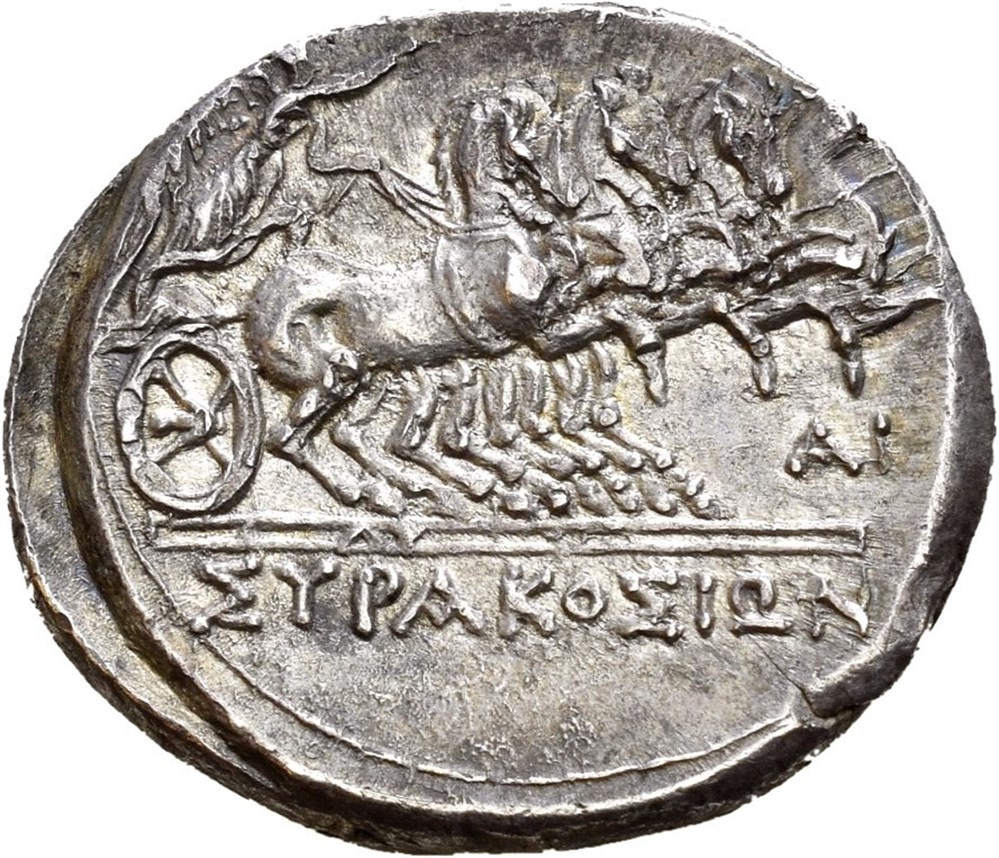×
Budrunden er avsluttet for dette objektet.
Objektnr. 64
SICILY, Syracuse. 214-212 BC. AR 8 litrai (6,61 g). Reverse die signed by the artist Lysid and struck under the Romans circa 212 BC. Head of Persephone to left, wreathed with grain; owl to right / ΣYPAKOΣIΩN, Nike driving fast quadriga to right; Magistrate name AI to right; faint artist signature AY on exergue line. Irregular flan and reverse struck a bit off-centre. Wonderful style and nicely toned with areas of blue iridescence. Very rare. 
- Startdato:
- Sluttdato:
- Objekt ID: 9812132
- Promsys_ListingSystemIdNum: 9812165

